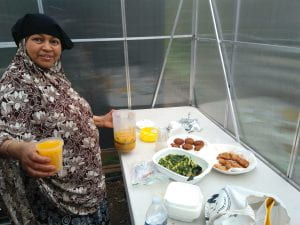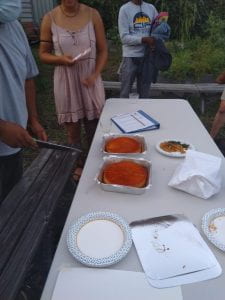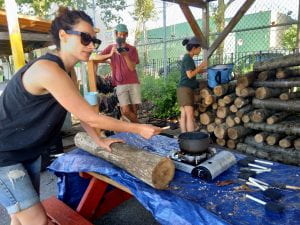Much to my surprise, it just so happened that this week I was able to help with spreading mushroom spawn to set up mushroom cultivation at three different farm sites in all different forms. Starting the week at Kelly Street Garden, Renee showed us a brief tutorial about mushroom farming before Kendra and I were able to get our hands dirty and try applying what we just learned.

Because mushroom cultivation overall was new to me, it was fascinating to see how this process can specifically be adapted to urban settings in which depending on the variety of mushrooms, the mushroom spawn can be deftly incorporated into existing structures in the garden. In particular, I saw how mushrooms can act as both an added-value product to areas like walkways or along the shaded perimeter of the garden, as well as serving to complement crops by growing alongside them in raised beds while contributing nutrients at the same time. In this way, I began to understand the growing demand for mushroom cultivation as a way to elevate the potential of urban garden and farm spaces which due to space constraints, naturally demand more creativity to achieve their desired products. In the past, I’ve already seen how the gardens and farms I’ve visited have integrated honeybees or utilized techniques like intercropping to benefit the ecosystem and maximize the variety of products the garden or farm can offer. Still, it was exciting to be able to partake in what felt like a grand experiment, especially when Kendra and I helped set up some oyster mushroom spawn in laundry hampers!
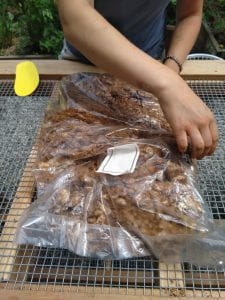
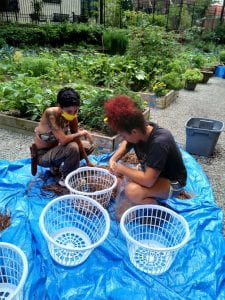
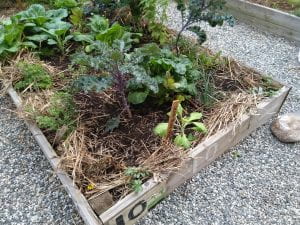
It also coincidentally lined up that this week New Roots Community Garden at Woodside received their shipment of woodchips for one side of the garden. As we removed the existing tarp that had been acting as a temporary weed suppression measure with the new woodchips, we also similarly crushed up and distributed the mushroom spawn within the new ground cover, allowing the mushrooms to act as further weed suppression and producing another valuable product for the garden. After having just learned about how to set up mushroom cultivation and the beneficial functions the mycelium can serve depending on its location, it was exhilarating to be able to work with mushroom spawn again on a much larger scale. Hopefully, Kendra and I will be able to revisit both sites in a year’s time to see the mushrooms fruit!
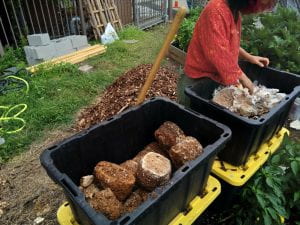
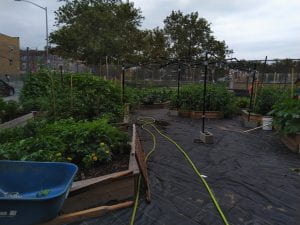

This week, Kendra and I also had the opportunity to meet with another CCE intern, Ileana, who we previously met when she visited us at both New Roots Community Garden at Woodside and at New Roots Community Farm in the Bronx earlier in the summer. We specifically coordinated a visit to Pink Houses Community Farm, located within the courtyard of the NYCHA Pink Houses development, to learn about the pest biocontrol project that Ileana is working on. She reported that through the use of simple traps such as buried containers of water and dishes soap and colorful plates containing the same solution, she was able to collect baseline data on the specific species and numbers of pests and beneficial insects at the farm. This data collection, this will serve to inform future integrated pest management (IPM) strategies as the farm will thus be able to better choose appropriate IPM techniques in order to target the specific pests plaguing the farm.



As well, as we met with Kelly who manages the farm, we learned that since the farm opened in 2015, it has served to grow many culturally significant crops as requested by the local residents, similarly to the mission behind the Woodside New Roots Community Garden. I was most pleasantly surprised to see bittermelon in the garden, which in my experience is a particularly influential dish in Chinese cuisine. While I was growing up, my parents would often tell us children that only after growing up and experiencing the bitterness of life will we be able to appreciate the bitterness of the bittermelon. However, because of its unsavory taste, I don’t often see bittermelon purposely grown in local gardens, so this find was particularly meaningful to me.

Kendra and I were able to end the day with a quick visit to Pink Houses Community Farm’s sister farm, the UCC Youth Farm which is located right underneath a raised train line! Stopping by to introduce ourselves to the farm manager, Jeremy, we were able to get a sense of the impact that paid youth programming can have as we got to see the community forming between all of the young interns Additionally, we got to see how the kitchen space at the farm is being used to encourage the interns to learn more about cooking and equipping them with the skills to do their own exploration on their own time, which is what Kendra and I are hoping to achieve through our own cooking demos that we are planning to hold at Kelly Street Garden next week.
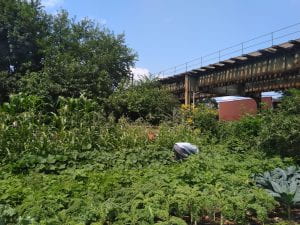

Weekly Highlights:
